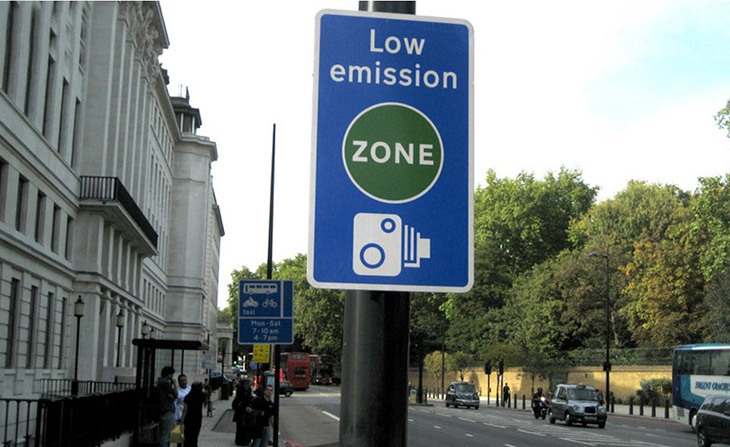

London’s bold environmental initiative, the expanded Ultra-Low Emission Zone (ULEZ), is achieving measurable success in curbing air pollution and enhancing public health. A recent report, reviewed by independent air quality experts, reveals that the program has significantly reduced harmful emissions such as nitrogen dioxide (NO₂), fine particulate matter (PM2.5), and carbon dioxide (CO₂) throughout the capital.
A Citywide Shift toward Cleaner Air
Initially launched in April 2019, the ULEZ was the world’s first low-emission zone operating 24/7, targeting vehicles that do not meet stringent emissions standards. Over time, the zone’s footprint has grown. The most recent expansion in August 2023 extended its coverage to all London boroughs, transforming it into the largest low-emission zone on the planet.
This policy shift has delivered dramatic results. According to the report, NO₂ concentrations across the city have dropped by 27 percent, while outer London areas saw a 31 percent reduction in PM2.5. These improvements span nearly every part of the capital, with 99 percent of air monitoring sites reporting better air quality since the ULEZ was first implemented.
“When I was first elected, evidence showed it would take 193 years to bring London’s air pollution within legal limits if the current efforts continued,” said London Mayor Sadiq Khan. “However, due to our transformative policies we are now close to achieving it this year.”
Carbon Footprint Reduced, Compliance on the Rise
Beyond immediate health benefits, the ULEZ has made a substantial dent in the city’s carbon emissions. Experts estimate that the carbon savings are equivalent to eliminating three million one-way passenger flights between Heathrow and New York—a striking comparison that underscores the environmental impact of fewer polluting vehicles.
The increase in cleaner cars has been staggering. In 2017, only 39 percent of vehicles driving through what would later become the ULEZ met emissions standards. By September 2024, that figure had soared to nearly 97 percent. This shift demonstrates not only a dramatic change in vehicle usage but also widespread public support and adaptation.
Supporting Londoners through Transition
Integral to this success has been the ULEZ scrappage scheme, which provided £200 million (approximately $258 million) in grants to help residents replace or retrofit older, high-emission vehicles. More than 54,000 applications were submitted, with many Londoners taking advantage of the program to switch to greener transport options.
“The scrappage scheme has been essential in ensuring that low-income Londoners are not left behind in the transition to clean air,” said a spokesperson from Transport for London. “It’s about equity as much as it is about sustainability.”
Contrary to early concerns from critics, the ULEZ expansion has not had a negative impact on local economies. Data shows that retail and leisure spending held steady across affected areas, while foot traffic actually increased by nearly two percent since the zone widened its reach.
Paving the Way for a Greener Future
Building on the momentum of ULEZ, London has set its sights even higher. The city plans to roll out more zero-emission buses, expand its network of bike lanes, and introduce additional electric vehicle charging stations. Public transport will be made more accessible through free or discounted fares for certain groups, and infrastructure will continue to prioritize walking and cycling.
The mayor’s long-term vision includes a goal for at least 80 percent of all journeys in London to be made via sustainable modes—walking, cycling, or public transport—by the year 2041.
Dr. Maria Neira, director of Public Health and Environment at the World Health Organization, underscored the significance of these efforts: “Cleaner air leads to healthier communities, lower rates of respiratory and cardiovascular illnesses, and a better quality of life for all residents.”
A Model for the World
As London reaps the benefits of decisive environmental leadership, its experience is attracting international attention. Urban planners and policymakers in other major cities are closely observing the outcomes, with many considering adopting similar measures.
The ULEZ demonstrates that bold climate action—backed by inclusive policies and public support—can produce real, measurable change. London’s journey serves as both an inspiration and a blueprint for cities worldwide confronting the urgent challenge of air pollution.
What are your thoughts? Please comment below and share this news!
True Activist / Report a typo







